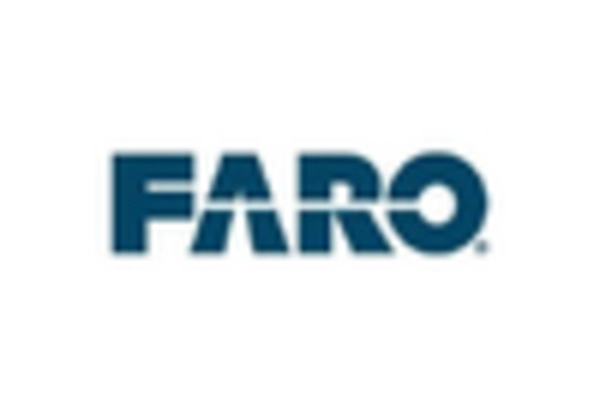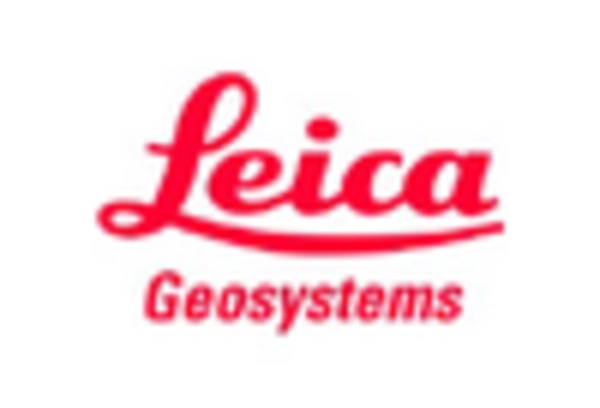Emergence of Portable Laser Scanners
The emergence of portable laser scanners is reshaping the laser scanner market by offering enhanced flexibility and convenience for users. These compact devices allow for easy transportation and deployment in various environments, making them particularly appealing for fieldwork in construction, archaeology, and industrial applications. The market for portable laser scanners is projected to grow by approximately 11% annually, as professionals seek more versatile solutions for data collection. This trend suggests that the laser scanner market is adapting to the evolving needs of its users, providing innovative solutions that enhance productivity and accuracy in diverse applications.
Growing Demand for Precision Measurement
the laser scanner market is seeing a surge in demand for precision measurement across various sectors, particularly in construction and manufacturing. As industries increasingly prioritize accuracy in their projects, the adoption of laser scanning technology becomes essential. This technology allows for the capture of detailed 3D data, which enhances project planning and execution. In the construction sector alone, the market is projected to grow at a CAGR of approximately 15% from 2025 to 2030. This growth is driven by the need for efficient workflows and reduced errors, which laser scanners facilitate. Consequently, the laser scanner market is positioned to benefit significantly from this trend, as companies seek to improve their operational efficiency and project outcomes.
Rising Applications in Surveying and Mapping
the laser scanner market is expanding significantly in its applications within the surveying and mapping sectors. As the need for accurate geographical data increases, laser scanning technology is becoming a preferred choice for land surveys, topographic mapping, and environmental assessments. The market for laser scanners in surveying is anticipated to grow by approximately 10% annually, driven by advancements in technology and the increasing demand for high-resolution data. This growth is further supported by government initiatives aimed at improving infrastructure and urban planning, which rely heavily on precise mapping. Consequently, the laser scanner market is poised to capitalize on these developments, as more organizations seek to leverage this technology for enhanced data collection and analysis.
Increased Investment in Infrastructure Development
the laser scanner market benefits from increased investment in infrastructure development across the United States. As federal and state governments allocate substantial budgets for infrastructure projects, the demand for advanced surveying and measurement tools rises. Laser scanners provide the necessary precision and efficiency required for large-scale projects, such as highways, bridges, and public transportation systems. The market is expected to grow at a rate of 14% annually, fueled by these investments. This trend indicates a robust future for the laser scanner market, as construction firms and government agencies increasingly adopt this technology to ensure project success and compliance with regulatory standards.
Integration with Building Information Modeling (BIM)
The integration of laser scanning technology with Building Information Modeling (BIM) is transforming the landscape of the laser scanner market. This synergy allows for the seamless incorporation of precise 3D data into digital models, enhancing the design and construction processes. As more firms adopt BIM methodologies, the demand for laser scanners is expected to rise. The laser scanner market is projected to witness a growth rate of around 12% annually as a result of this integration. This trend not only streamlines workflows but also improves collaboration among stakeholders, leading to better project outcomes. The laser scanner market is thus likely to see increased investments as companies recognize the value of combining these technologies.
















Leave a Comment